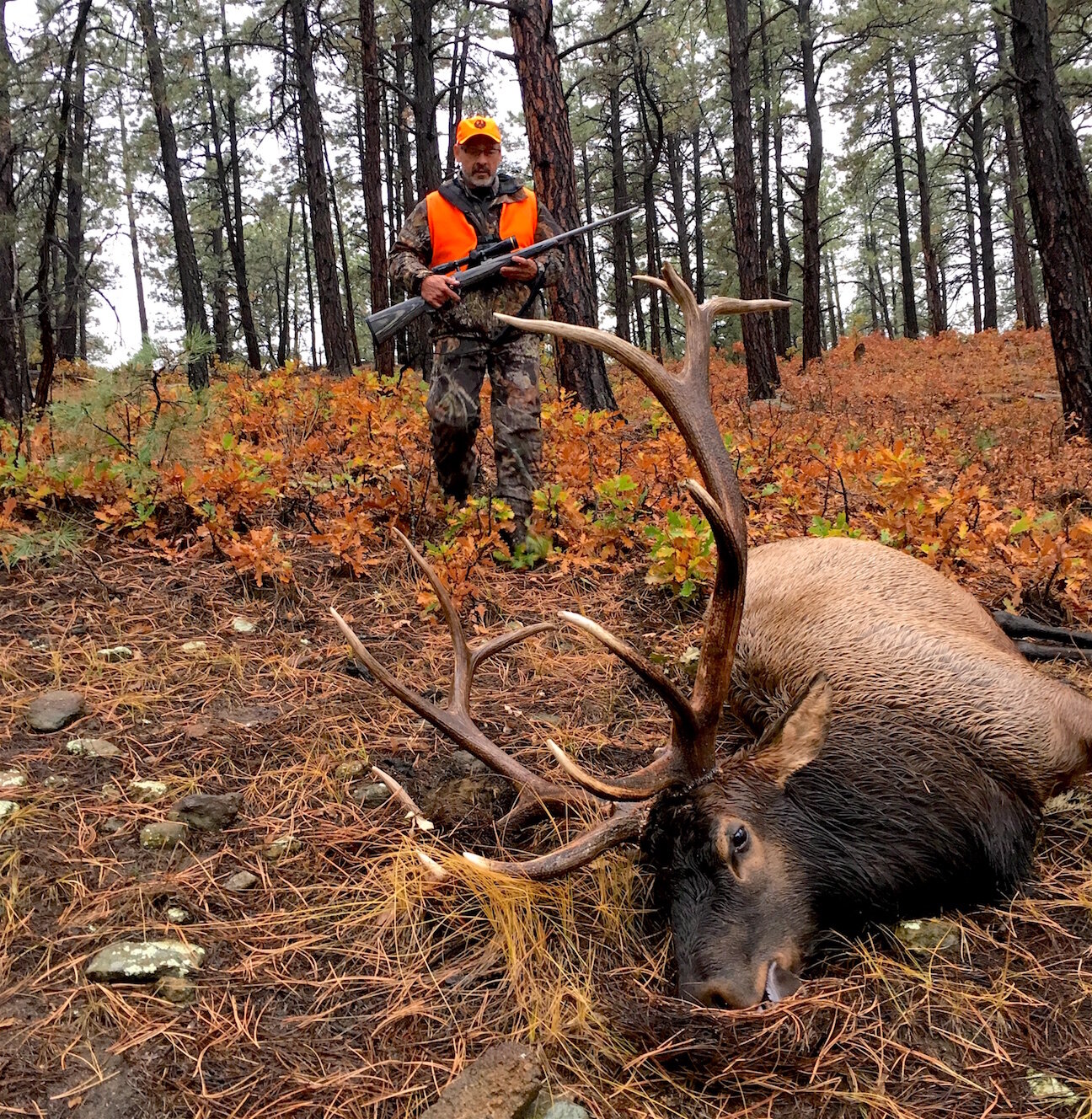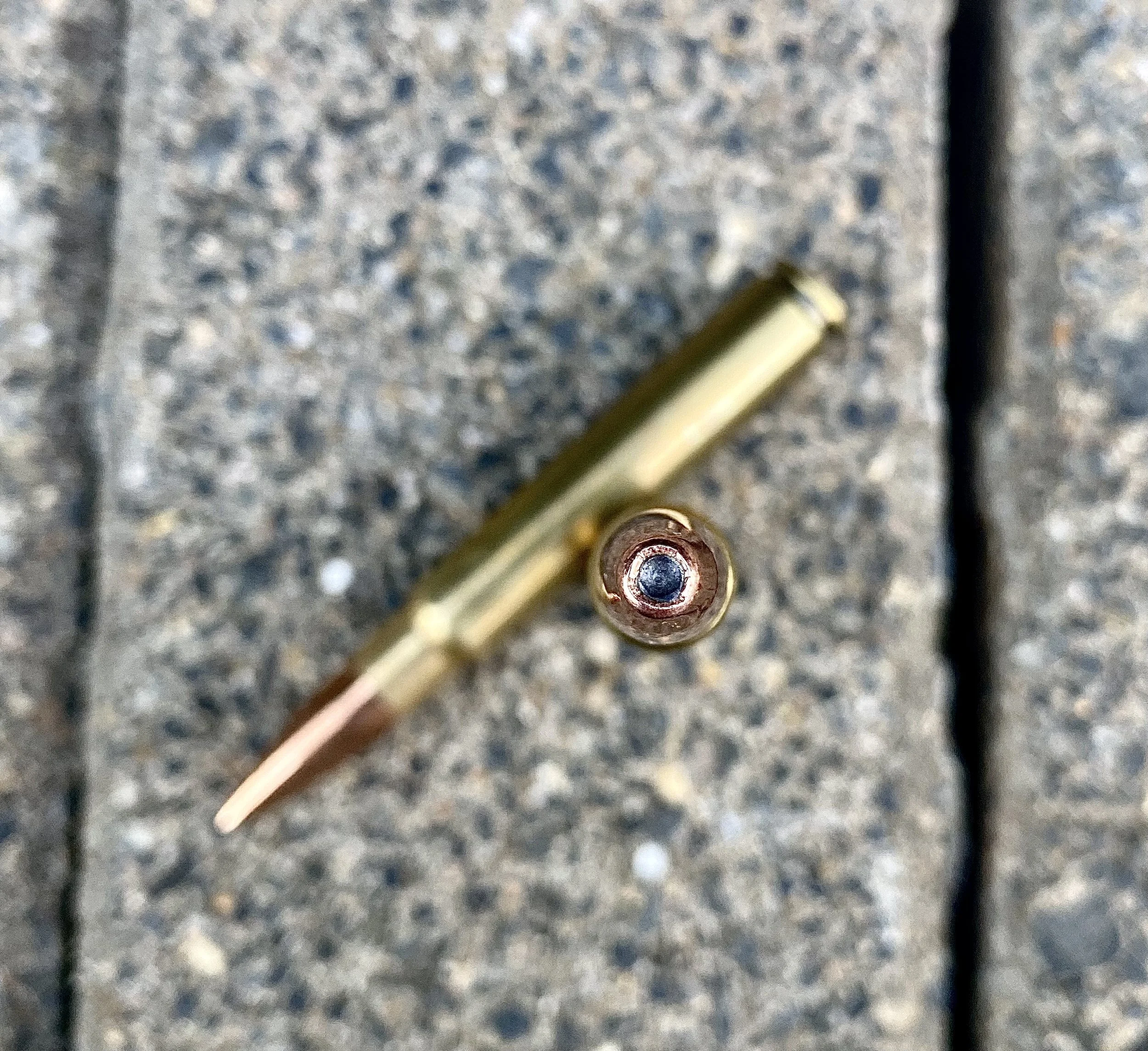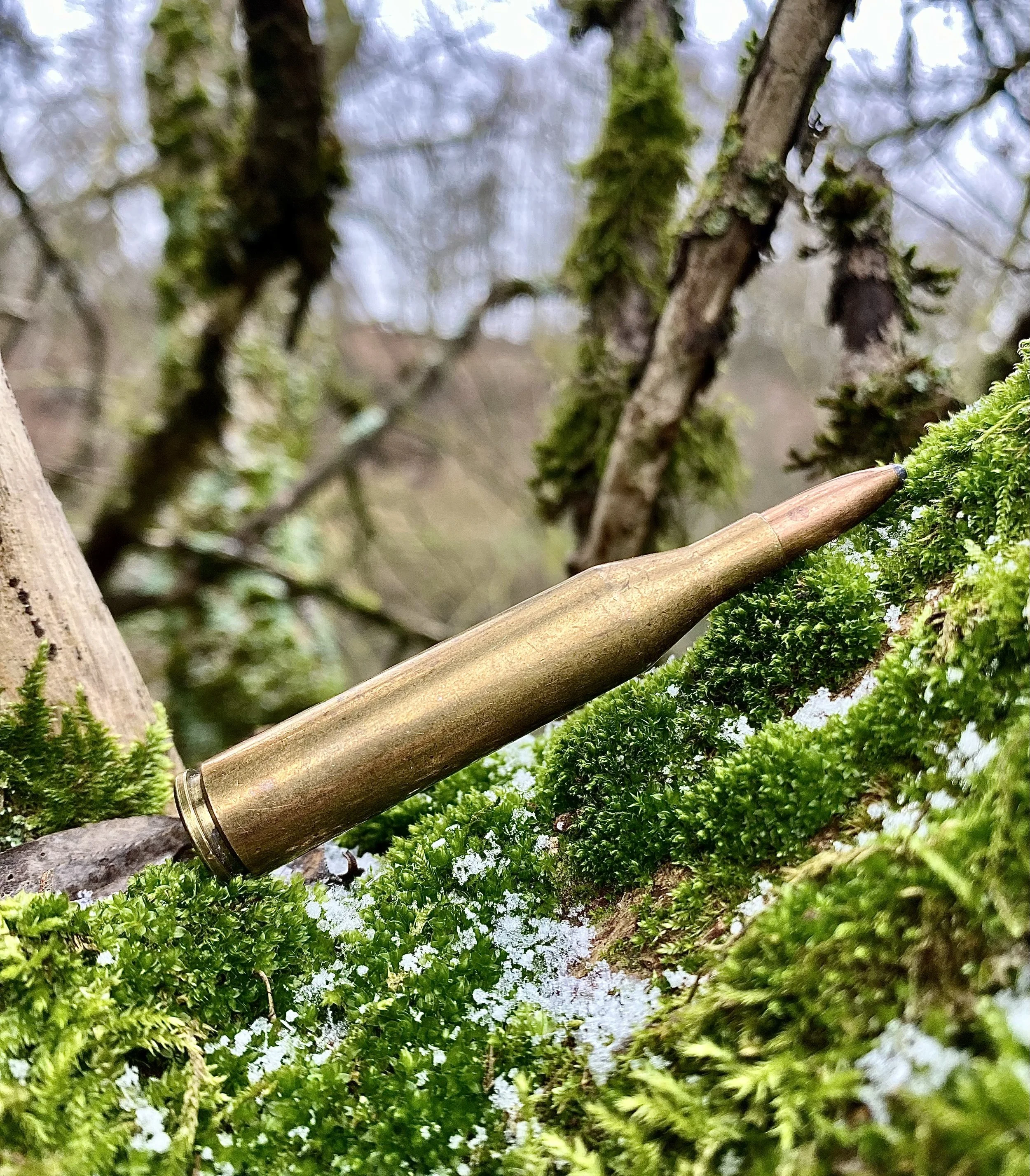Hunting Knockdown Power: Forget DRT
Still hunting knockdown power? Still hoping to find the ultimate rifle, cartridge, and bullet that will put deer down instantly? Seeking the perfect down-and-out, DRT (dead right there,) one-and-done, body slammer round? So is the reader who sent this letter:
Dear Ron:
“I'm hunting knockdown power in a deer rifle. What caliber gives me enough knockdown power to guarantee my deer won’t take a step if I hit it right in the chest? I eagerly await your reply.”
Signed: Power Hungry Reader
Hunter approaching downed bull elk represents not hunting for knockdown power, but great shot placement.
Hunting elk is not like hunting knockdown power. The author pumped three 180-grain Nosler Accubond bullets into this bull from a Ruger Hawkeye rifle in 300 Win. Mag. One broke shoulder, a second hit lungs, third in neck but just under the spine. The bull was 50 or 70 yards away (too excited to make an accurate measurement at the time.) None of the shots knocked the bull down, but hemorrhaging did, and quite quickly. Start to finish maybe 10 seconds. Scope was a
Dear Power Hungry:
I hope I didn’t make you wait too long for this answer because your waiting has been in vain. Knockdown power, as I often write, including in this previous blog report, is a misnomer. Knockdown shot placement is the more accurate term. The good news is you don’t need a super heavy, super fast, super magnum to deliver that.
Despite all the hype about this super magnum and that knockdown power bullet, the truth is this: No caliber/cartridge/bullet you can shoot from a shoulder-fired rifle or shotgun will reliably knock down anything much larger than a jackrabbit unless you hit it in the central nervous system. I know. I’ve tried it.
A Whitetail Knockdown Story
Let me relate an example. I was hunting knockdown power with a 357 Magnum Colt Python spitting 158-grain jacketed hollow points. Muzzle velocity was 1,425 fps as measured by an Oehler chronograph. (You can buy a decent chronograph here for about $100.) Would it be enough power? I hit my whitetail square in the heart/lungs vital zone and it didn’t even flinch. So I hit it again. And again. Three solid hits through the vitals and it was still running! I thought my gun was firing blanks. And then the whitetail fell over, stone dead.
You might imagine the 158-grain JHP good, bad, or inadequate for whitetails, and you might be right. But the whitetail I shot was a whitetailed jackrabbit. It probably weighed five pounds. The 158-grain bullet was carrying about 700 f-p kinetic energy when it left the muzzle. That is theoretically enough oomph to lift a 700-pound rabbit a foot off the ground. That 5-pound jack should have been knocked 140 feet! So why did it not even wobble?
Image shows hunter hoisting a whitetail jackrabbit.
Somewhere in my misspent youth I got the idea a 158-grain bullet from a 357 Magnum Colt Python should knock a jackrabbit five ways to Sunday. It didn't. This is neither me nor the jackrabbit mentioned in this incident, but it gives you some idea of the rabbit's size.
Before we jump to the “too hard bullet” zipping through like a hot knife through warm butter, let’s remember this is a hollow point. And the mid-section of a jackrabbit has plenty of liquid with which to initiate expansion. And at 1,425 fps the bullet certainly can’t be guilty of the often cited “too fast to work” condemnation.
So what happened?
Hunting Knockdown Power Reality
Reality. Physical reality. For very action there is an equal and opposite reaction. My Python didn’t push me back or knock me over, so why would it do that to the rabbit? OK, I’ll admit those hollow point slugs all zipped right through that jack without hitting any structural bones. But keeping all the bullet’s energy inside the game doesn’t work as well as proponents suggest it should, either.
I’ve witnessed this many times, once with a coyote I contacted with a 150-grain Nosler Ballistic Tip from about 70 yards away. I was hunting knockdown power with a 7mm Rem. Mag., aiming carefully with the support of my favorite portable shooting sticks. The bullet was going approximately 3,200 fps. The coyote was standing in fresh snow, facing me. The bullet entered its chest between its forelegs, ripped back into the body cavity and stayed inside. Broke up. No exit wounds of any kind. That 30-pound little predator absorbed roughly 3,000 foot-pounds of energy, yet it flopped onto its chin and brisket and never twitched. Knockdown power? No, just good bullet placement and sufficient body shock to terminate instantly.
Hunter with coyote taken with low-power 22-250 AI rifle to illustrate you don't need massive power to get the knockdown effect.
Decades of coyote hunting with everything from shotguns to 338 Win. Mags. proved that none had anymore hunting knockdown power than my preferred, go-to 22-250 AI. This Holland Custom rifle with 1:8 twist drives 75-grain, high B.C. bullets 3,350 fps. It wears a Leupold VX-3 4.5-14x40mm scope with
. That Bushnell Elite binocular was a real performer for the price. I think it's been upgraded as the
.
Shocking Levels of Power
Shock, which you can read about in this earlier blog, really does happen. Inconsistently. Ditto knockdown power. Hunters should view both as products of good shot placement, not some magical, raw bullet power. If power were the big deal ammo companies make it out to be, that coyote should have been driven backward 100 feet.
Were I to compile a dictionary of shooters/hunters terms, under Knockdown Power I would write: A misnomer for proper shot placement. See also "hit the central nervous system," and “got shock lucky.”
Don’t get me wrong. Some hits do drop game in its tracks, even game substantially larger than the cartridge, caliber, bullet, and power used to engage it. Back in the 1960s my Dad prepared steers for processing by applying a 40-grain solid 22 Remington Long Rifle between their eyes. That "powerful" little pill (perhaps 140 f-p muzzle energy) knocked them down every time! But I don’t want to hunt moose with one.
Image shows 22 LR cartridge beside 12 ga., 308 Win., and 30-06 cartridges to illustrate dramatic differences in size and hunting knockdown power.
The 22 LR has much less knockdown power than the 12 ga., 308 Winchester and 30-06, yet it has killed every big game species including buffalo and elephants -- and not because of its knockdown power.
So, hunting knockdown power might be the wrong approach. We should all focus less on uber-magnum knockdown power and more on precision shot placement. If this means you must shoot a 100-grain bullet from a 243 Winchester or 6mm Creedmoor (recoil energy 14 f-p), fine. With reasonable expansion, that bullet should create enough hemorrhaging to conclude things nicely. If you can handle a 250-grain bullet from a 338 RUM (recoil energy 50 ft-lb.) by all means use it. Erring on the side of a larger, faster bullet never hurts. Unless you flinch and miss.
Mr. Spomer once watched Scott Grange knock down an old bull water buffalo in Australia with one shot from a 7mm WSM pushing a measly 150-grain Winchester Fail Safe bullet. The bullet severed the spinal column in the center of the bull's neck. Neither Grange nor Spomer credit the 150-grain .284 bullet at 3,100 fps with knockdown Super Powers.
















